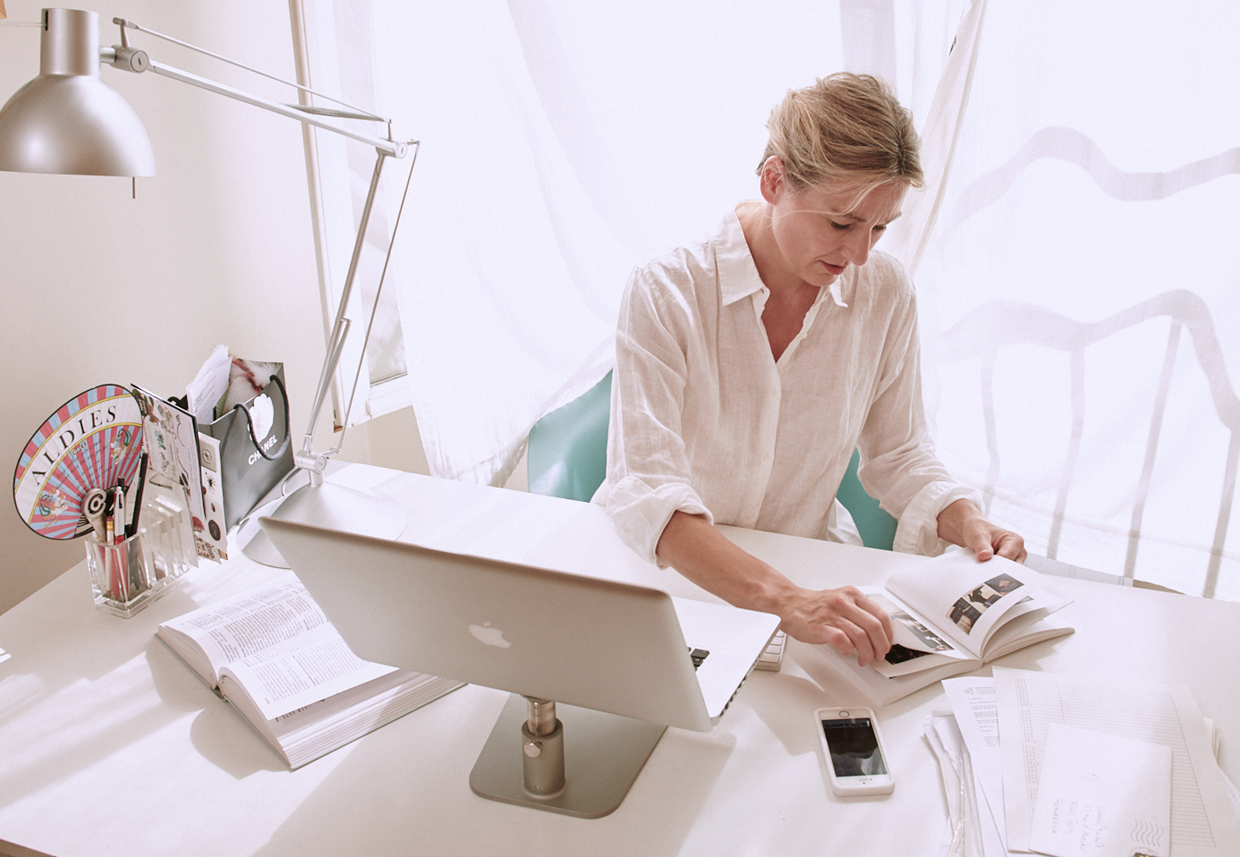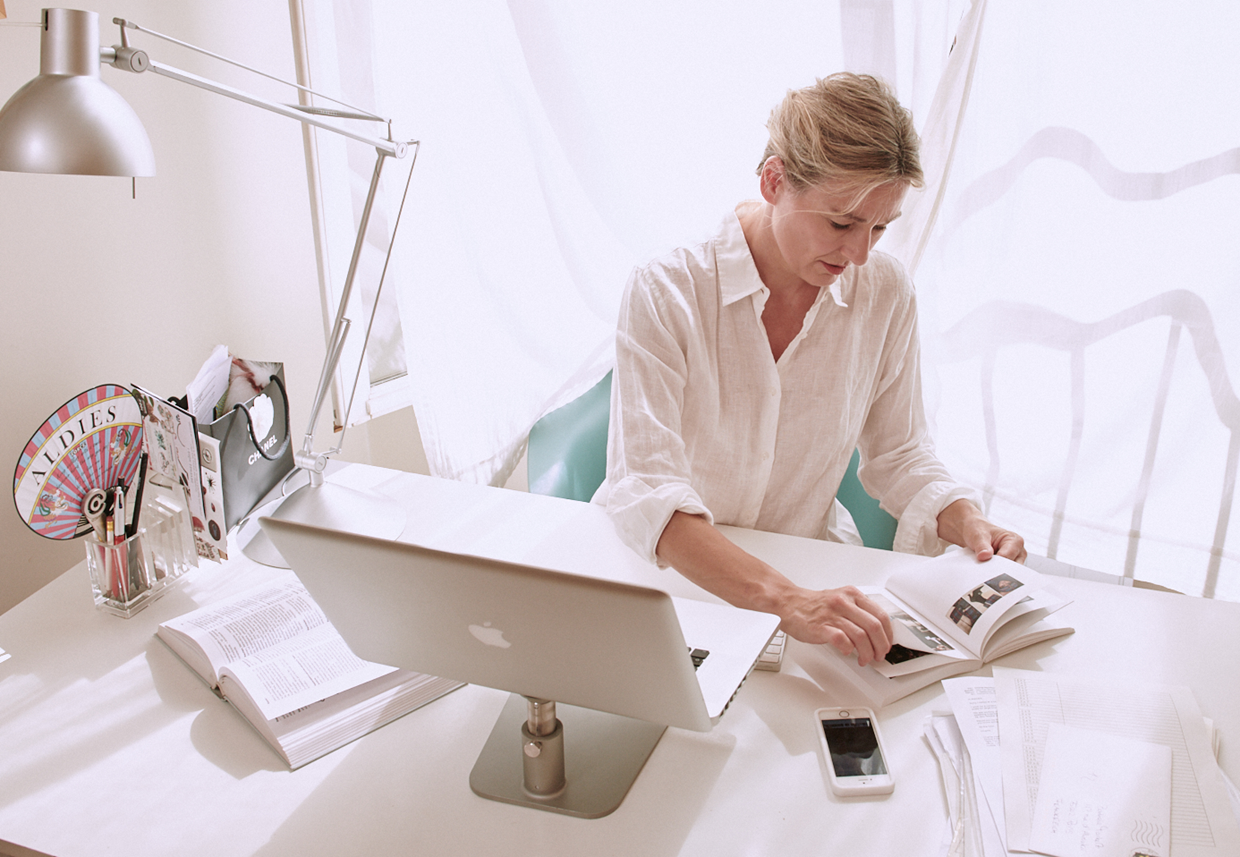Hearing instruments business
Close connections
Three short text messages are all that is required to set up the appointment: “Is Thursday about 2pm OK for you? – Yes! – Great. I’ll give you a call!” A few days later, a little push message appears at the agreed time on the myPhonak app on Barbara Markert’s smartphone. The busy freelance journalist and mother of a 9-year-old boy clicks on the link and is directly connected to her audiologist.
The employee at a specialist audiology store works in the Paris suburb of Créteil, while Barbara Markert is based in the middle of Paris, not far from the Louvre and the Pompidou Center. The metro journey from her home office to Créteil would take over an hour, the return trip, two hours. The elegant 52-year-old can now save herself this time; thanks to remote support for her new Phonak Marvel aids, her audiologist can access her devices via the app and fine-tune them remotely. “The sound quality is super inside a room, but there is still a bit of an echo outdoors. Can you fix that?” asks his customer. The audiologist alters the settings from his computer and asks her to try out the adjustment over the next few days before getting back to him.
Barbara Markert, a German national who has settled in Paris, has been wearing Phonak’s multi-functional Marvel hearing aid since January 2019. “I’m constantly amazed by all the things the new devices can do,” says the lively journalist. She is especially taken with the option to link it with her computer via Bluetooth. “I often spend whole days working at the computer, typing up interviews I’ve done. In the past, I had to laboriously take my hearing aids off and plug in headphones, but that’s no longer necessary, thanks to Marvel. Everything is transmitted to my ears via the hearing aids.” Skype interviews and videos of fashion shows with lots of music, which she watches for research purposes, are transferred directly to the devices, no longer bothering her husband, who is also a freelancer and has his office right next door to her work room in the flat they share.


Barbara Markert, journalist
Being able to slot the device effortlessly into its charging dock at night is another bonus for the journalist. “Not having to change single-use batteries all the time is right up my street, as I’m particularly concerned about ecology and environmental protection,” says Barbara Markert. Despite its Bluetooth connectivity, the device uses very little power thanks to its powerful lithium-ion battery technology, and it only has to be recharged in the evenings before going to bed.
It took Barbara Markert a long time to come to terms with her hearing loss. A friend of hers who is an ENT physician discovered her hearing loss, originating from damage to her inner ear, not long after she had turned 30. It had probably been caused by a childhood illness. “After the diagnosis, I stubbornly refused to wear a hearing aid for the longest time; for aesthetic reasons in my career as a fashion journalist, I simply couldn’t imagine it. Back then – this was in the 1990s – I felt the devices were still too large and obtrusive.”
The journalist muddled through her daily life for almost 20 years. She had particular difficulty with high-pitched sounds, would set her cellphone’s ringer to maximum volume, and developed a predilection for foreign language films with subtitles. Eventually the time came when she had to ask someone to repeat themselves in a conversation once too often. “I was ready for a second hearing test.” The new diagnosis identified mild hearing loss in speech ranges and moderate hearing loss at high frequencies. Some very high and very low pitches had disappeared beyond her acoustic perception entirely. “She could have saved all of these facets of her hearing if she had taken the advice of my colleague back then. Indeed, her hearing would probably be better now than it was back then,” is the ENT doctor’s no-nonsense conclusion, adding that there is no longer any chance of repairing anything once a person has reached the end of their 40s; from that point on, he says, it is just a question of trying to preserve what is left.
After such a clear wake-up call, Barbara Markert was finally ready. Her decision was made easier by the discreet design of new models such as Phonak’s Marvel. “Most of my acquaintances have no idea that I wear hearing aids,” she says. The 52-year-old is full of pride at having dared to take this step even though she is “still young”. “It was essential for me to do something,” she remembers, adding that while she had put up with hearing less over the years, she had also gotten used to hearing better very quickly. “I would never have imagined that a hearing aid could also be genuinely cool. Who else can make a call and leave their smartphone in their pocket? Or watch a film on their computer with no earphones in and their partner asleep in bed beside them?”

